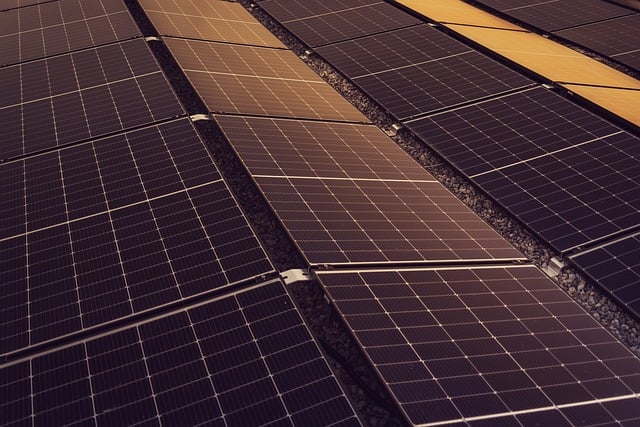Solar-Powered Air Conditioning: A Cool, Energy-Efficient Home Solution
As temperatures rise and energy costs soar, homeowners are increasingly looking for innovative ways to keep their homes comfortable while reducing their carbon footprint and utility bills. Solar-powered air conditioning offers a promising solution, combining renewable energy with efficient cooling technology. This article explores how solar air conditioning works, its benefits, and what you need to know before making the switch.

What are the benefits of solar air conditioning for homeowners?
One of the primary advantages of solar air conditioning is the potential for significant energy savings. By utilizing free solar energy to power your cooling system, you can dramatically reduce your reliance on grid electricity and lower your monthly utility bills. Additionally, solar-powered air conditioning helps decrease your home’s carbon footprint, making it an environmentally friendly choice for eco-conscious homeowners.
Another benefit is the potential increase in home value. As more buyers prioritize energy-efficient features, homes equipped with solar air conditioning systems may become more attractive in the real estate market. Furthermore, some regions offer tax incentives or rebates for installing solar energy systems, which can help offset the initial investment.
Are there different types of solar air conditioning systems?
Yes, there are several types of solar air conditioning systems available to suit different needs and budgets. The most common types include:
-
Solar PV air conditioners: These systems use photovoltaic panels to generate electricity, which powers a conventional air conditioning unit.
-
Solar thermal air conditioners: These systems use solar collectors to heat a refrigerant, which then drives the cooling process through an absorption chiller.
-
Hybrid solar air conditioners: These systems can switch between solar power and grid electricity, providing flexibility and ensuring consistent cooling.
-
Solar-assisted heat pumps: These systems use solar energy to enhance the efficiency of heat pumps, which can provide both heating and cooling.
What factors should I consider before installing solar air conditioning?
Before investing in a solar-powered air conditioning system, it’s essential to consider several factors:
-
Climate and sun exposure: Your location’s climate and the amount of sunlight your property receives will impact the system’s efficiency and effectiveness.
-
Home size and insulation: The size of your home and its insulation quality will affect the cooling load and the required system capacity.
-
Existing HVAC system: Consider whether you need to replace your entire HVAC system or if you can integrate solar technology with your current setup.
-
Budget and long-term savings: While solar air conditioning systems can lead to significant energy savings, they often require a higher upfront investment compared to traditional systems.
-
Local regulations and incentives: Check for any local building codes, permits, or incentives that may affect your installation or provide financial benefits.
How much does solar-powered air conditioning cost?
The cost of solar-powered air conditioning systems can vary widely depending on factors such as system type, capacity, and installation complexity. Here’s a general overview of estimated costs for different solar air conditioning options:
| System Type | Capacity | Estimated Cost Range |
|---|---|---|
| Solar PV Air Conditioner | 1-5 ton | $3,000 - $15,000 |
| Solar Thermal Air Conditioner | 10-20 ton | $20,000 - $50,000 |
| Hybrid Solar Air Conditioner | 1-5 ton | $4,000 - $20,000 |
| Solar-Assisted Heat Pump | 2-5 ton | $6,000 - $25,000 |
Prices, rates, or cost estimates mentioned in this article are based on the latest available information but may change over time. Independent research is advised before making financial decisions.
It’s important to note that while the initial investment may be higher than traditional air conditioning systems, the long-term energy savings can offset these costs over time. Additionally, some homeowners may be eligible for tax credits or rebates, which can help reduce the overall expense.
How can I maintain my solar air conditioning system?
Proper maintenance is crucial for ensuring the longevity and efficiency of your solar air conditioning system. Regular maintenance tasks include:
-
Cleaning solar panels to maximize energy absorption
-
Inspecting and cleaning air filters
-
Checking refrigerant levels and recharging if necessary
-
Inspecting electrical connections and components
-
Scheduling professional maintenance at least once a year
By keeping your system well-maintained, you can ensure optimal performance and extend its lifespan, maximizing your investment in solar-powered cooling.
In conclusion, solar-powered air conditioning offers an innovative and eco-friendly solution for homeowners looking to reduce their energy consumption and cooling costs. While the initial investment may be higher than traditional systems, the long-term benefits in terms of energy savings and reduced environmental impact make it an attractive option for many. As technology continues to advance and costs decrease, solar air conditioning is likely to become an increasingly popular choice for sustainable home cooling.






